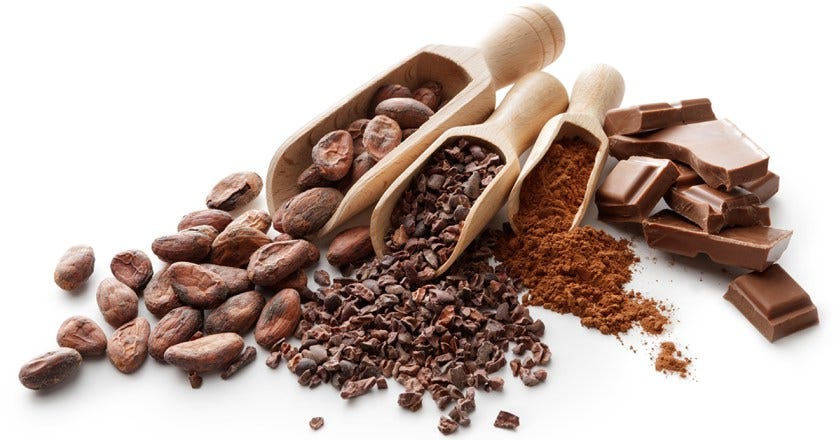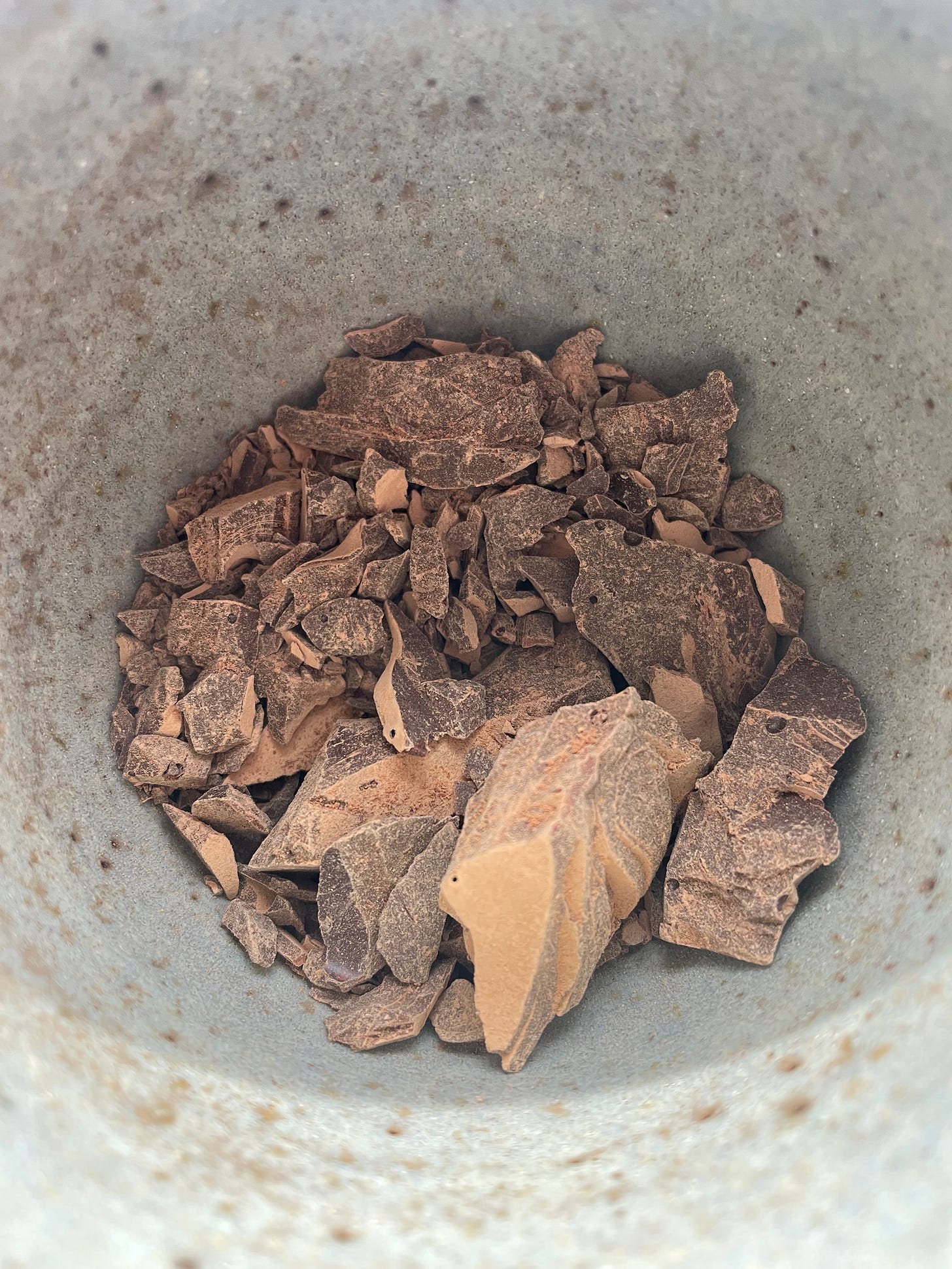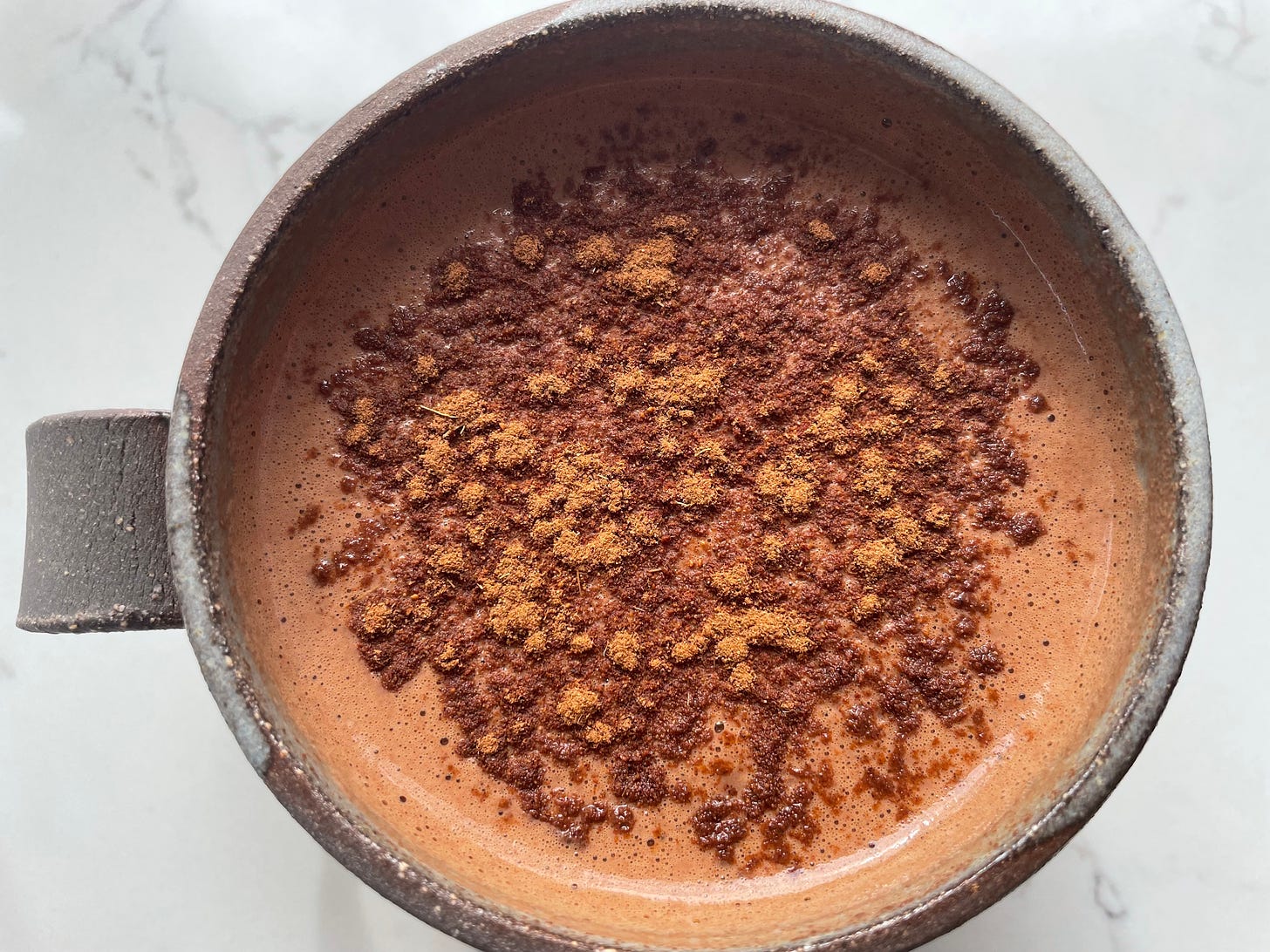Every morning here at Light and Wellness Co. looks something like this:
- See the sunrise
- Eat a protein-rich breakfast
- Drink CACAO
If I’m being completely honest, though, I spend all my time during Steps 1 and 2 thinking about Step 3. Just kidding (no, I’m not).
So what actually is cacao? It’s important that you don’t confuse the rich, luscious superfood that is cacao with its phoney, processed impersonator cocoa - or even worse, with chocolate.
Both cacao and cocoa are originally harvested from the pod-like, seed-containing fruits of the Theobroma cacao tree, and both products may eventually become part of a typical chocolate product - but that’s pretty much where their similarities end.
Essentially:
Cacao —> Is the name used to refer to the pods and beans straight from the Theobroma cacao tree, and sometimes to the ground-up contents of the beans as well; it refers to any cacao product that is entirely raw/natural/pure/unrefined or minimally processed. The raw beans used to make cacao products are sometimes fermented to better release their chocolatey flavour, and are always cleaned and dried - but that is where the processing ends. Hence, the flavour of a cacao product remains quite bitter, so they aren’t often used in chocolate products unless it is dark chocolate.
Cocoa —> Is the name used to refer to cacao pods/beans that have been fermented, cleaned, and dried just like cacao products are, but then they go a step further; cocoa products are also roasted/heat treated, hulled/cracked to nibs, and finally grind, alkalised, and pressed into a paste (separating the fat or cocoa butter from the cocoa solids, later to become a powder through further pressure and heat treatment) - i.e. processed - to give it that sweet taste you likely associate with chocolate products. Hence, the name ‘cocoa’ is used to identify products that are more heavily processed (if not highly processed) versions of cacao.
To simplify:
Cacao —> Cocoa —> Chocolate
And also, corresponding with the above: ****
Bitter/nothing like chocolate —> Less bitter/more chocolatey —> Sweet/chocolatey
Why does all of this matter? It matters because you want anything that you consume - be it food, drink, or supplement - to be as unprocessed or as close to its original form as possible, in order to preserve the nutrients it contains.
Roasting or heating cacao beans produces cocoa and destroys the antioxidants, minerals, and flavanols contained in the raw product. At some point in processing, cocoa products may also have fat and sugar/sweeteners added (including artificial ones), further lowering their nutritional value overall.
Cacao - which should always be unroasted and have little or no heat applied to it, as well as unsweetened and with no fat added - retains its nutritional value and has a much higher mineral, antioxidant, flavonoid, iron, and fibre content than cocoa.
Now that we’ve exposed the imposter, let’s get back to the star - cacao.
It is believed that the ancient Mayans were the first to discover and utilise the immense healing powers of the Theobroma cacao tree, and they used it to make a beverage. The ancient Mayans actually considered it a “drink of the Gods”. In fact, the word Theobroma, derived from the Greek, literally translates to ‘Food of the Gods’.
Cacao is full of nootropics (memory and cognitive function enhancers) and adaptogens (natural stress adaptors), as well as key antioxidants, minerals, flavonoids and flavanols. Some of its myriad benefits include:
- Structure support (including bones, connective and cardiac tissues, and muscles)
- Digestive support (and high fibre content)
- Nervous system support (and healthy stress levels)
- Cellular function and stem cell production improving
- Cognitive function and sleep quality improving
- Thermogenesis effect (fat burning > fat storing)
- Anti-inflammatory properties
- Anti-cancer properties
- Detoxifying
- Deoxidising
- Highest magnesium content of any whole food
- Contains 40x the antioxidants found in blueberries (gram for gram)
- Great caffeine alternative (energy without the crash)
Remember this, though - just like supplements, not all cacao products are created equally. These are some key words you want to look for when purchasing any cacao product, to ensure that it is as close to its original form as possible and retains its full nutrient spectrum:
- Organic
- Ceremonial grade
- Authentic
- Raw
- Pure
- Unrefined
- Unroasted
- No heat treatment
- Unhulled
- Undutched
- Unsweetened
- No machine processing
Cacao can come in the form of shard-like pieces, which are a great topping for smoothie and yoghurt bowls. But our favourite way to consume cacao is to make it into a thick, delicious beverage with a little bit of honey to sweeten it - leaving you with a potent health-promoting and invigorating elixir that is even more delicious than a regular old hot chocolate.
At Light and Wellness Co, our morning routines are densely packed with activities and supplements that are carefully chosen for their unique benefits. We can’t always take every single supplement we want to, or make the time for every single health-promoting activity.
But we are so confident in the magic of cacao that it is a crucial, non-negotiable part of our morning routine every single day. Why don’t you make it a part of yours, too?
At Light and Wellness Co. we offer Authentic Ceremonial Grade Criollo Cacao in 500g and 60g if you are looking to try some! (Suggested serving size is 10g but we have closer to 50g)

Authentic Ceremonial Grade Criollo Cacao 500g
BUY NOW
Cited:
- https://www.forbes.com/health/nutrition/cacao-vs-cocoa/
- https://www.healthline.com/nutrition/cacao-vs-cocoa#nutrition
- https://bcbstnews.com/bluehealthsolutions/cacao-cocoa-chocolate-what-are-the-differences-and-do-they-matter/





